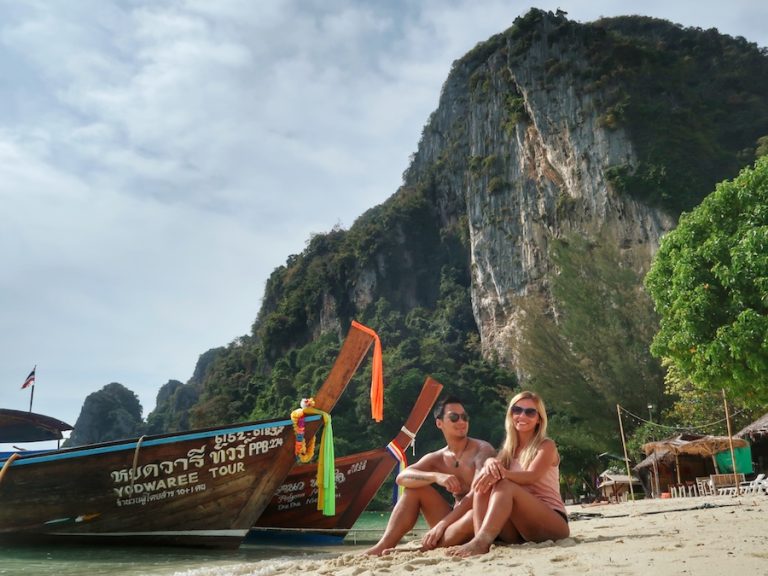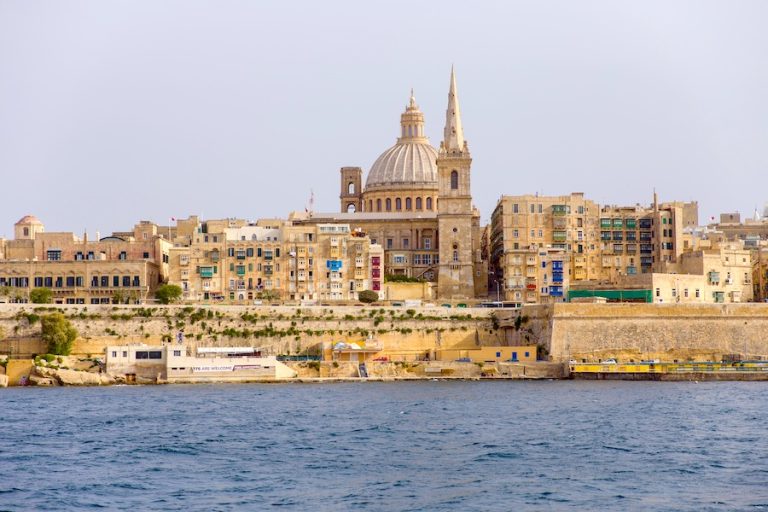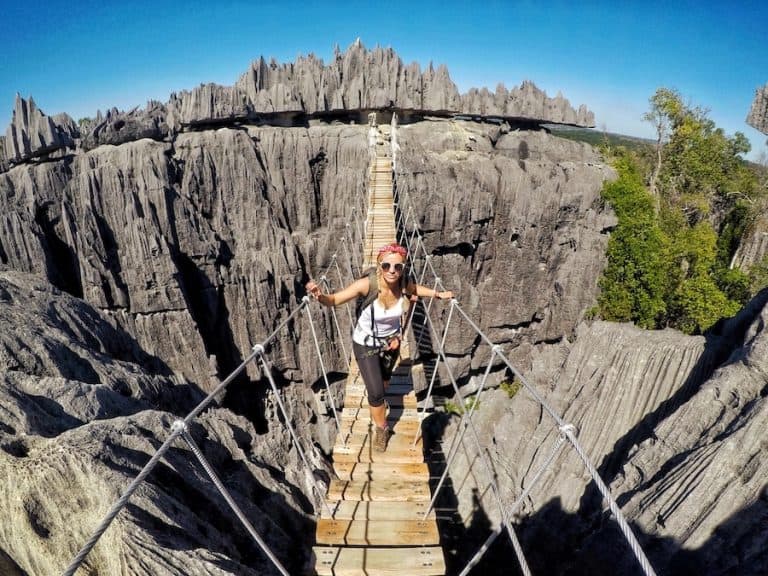Pailon Del Diablo: Complete Guide, Costs & Info 2025
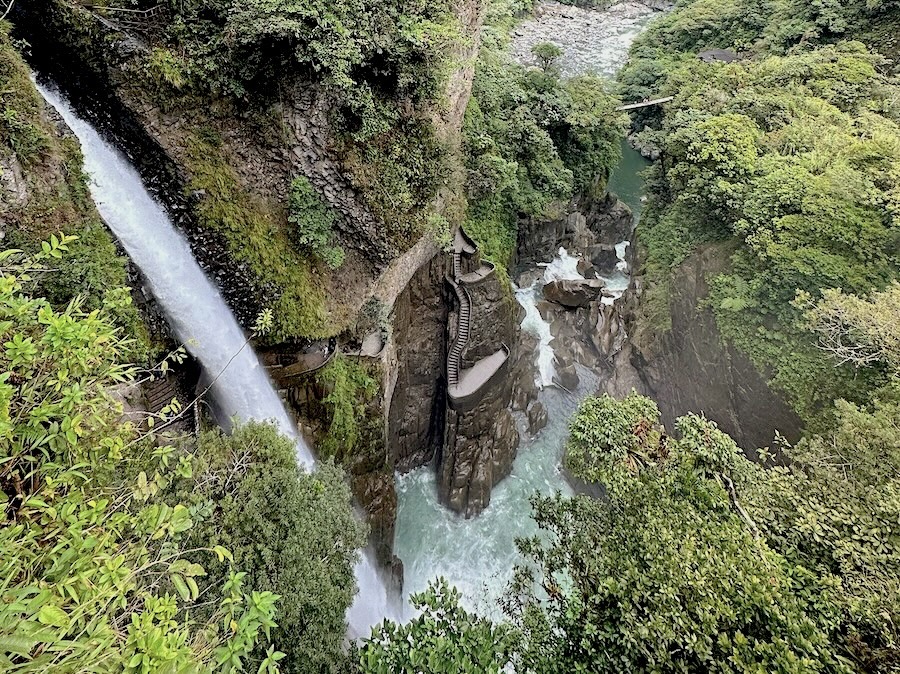
Planning a visit to Pailón del Diablo? This guide has you covered.
Pailón del Diablo, also known as the Devil’s Cauldron, was one of the standouts from our trip to Ecuador. It’s loud, wet, and genuinely impressive. If you’re in Banos, it’s worth the short journey.
We spent a few days wandering around Banos and heading out into the surrounding area — think lush green mountains, cloud forest, and enough sketchy ziplining to question your life choices. It’s the kind of place that mixes chilled vibes with adrenaline surprisingly well.
Located along the Ruta de las Cascadas, you’ll probably hear Pailón del Diablo before you see it. Or maybe you won’t, because by then you’re already getting hit in the face with mist. You’ll want to bring the waterproofs for this one.
In this guide, you’ll find everything you need to know about visiting Pailón del Diablo. From practical tips and costs to what to expect when you’re face to face with the falls, it’s all here. Whether you’re after a bit of adventure or just want to see something spectacular, this’ll help you make the most of it.
What Is Pailón del Diablo?
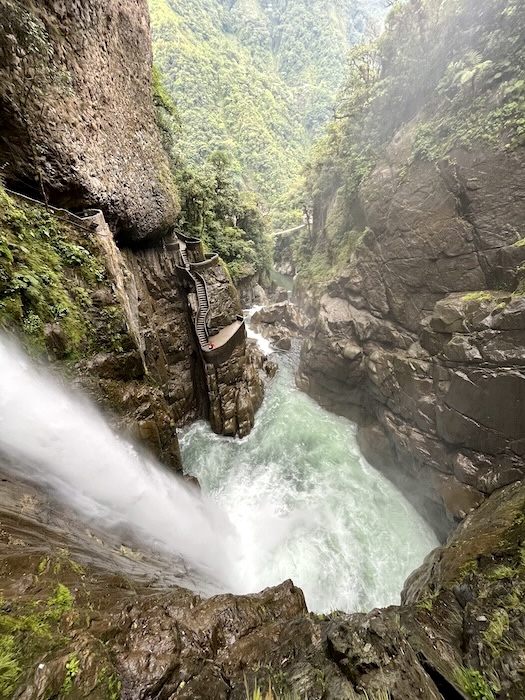
Pailón del Diablo, or the Devil’s Cauldron in English, is one of Ecuador’s most famous and spectacular waterfalls. And once you’re standing next to it, you’ll see why.
The name “Pailón del Diablo” comes from a local legend. Some say you can see the devil’s face in the rocks beside the falls. Look closely and you might spot it (if all you see is mist and water, then you’re too close). The area also has Inca roots; waterfalls like this were once sacred places, used for rituals and spiritual recharge.
The best bit about these falls is that it’s not particularly hard to reach, but it still feels wild, which is why it’s such a popular spot not just for foreign tourists but national tourists as well. The water drops around 80 metres into a narrow gorge, sending mist up into the trees and most likely, onto your face.
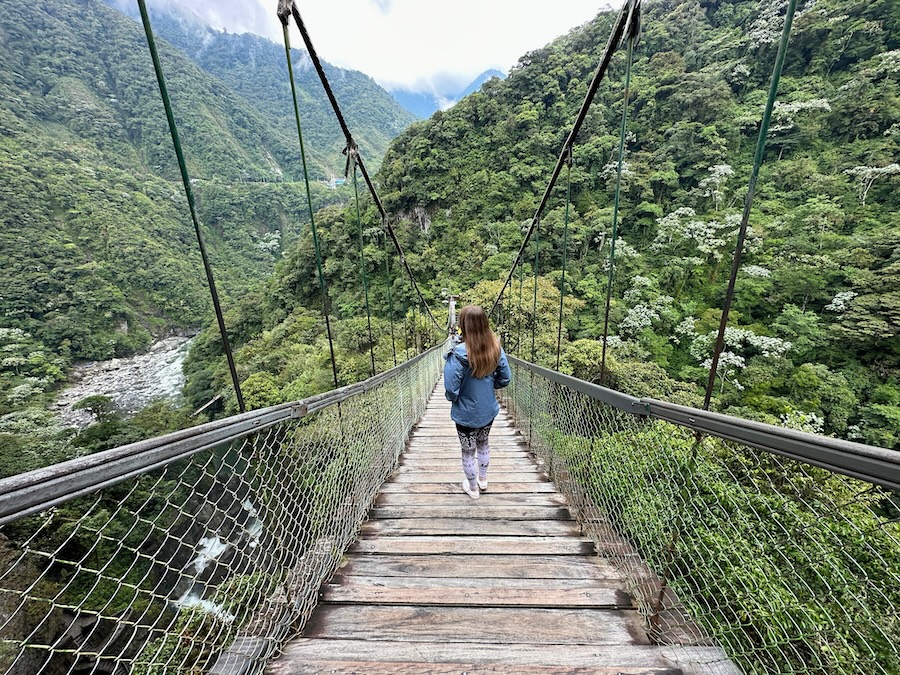
You’ll find it in Río Verde, a small village on the edge of the Amazon basin, about 30 minutes from Baños. It’s part of the Ruta de las Cascadas, a scenic stretch dotted with zip-lines, rickety bridges and questionable cable cars.
There are two different entrances — one that takes you up high for a wide-angle view, and one that gets you face to face with the falls. More on that below.
How to Get to Pailón del Diablo from Baños
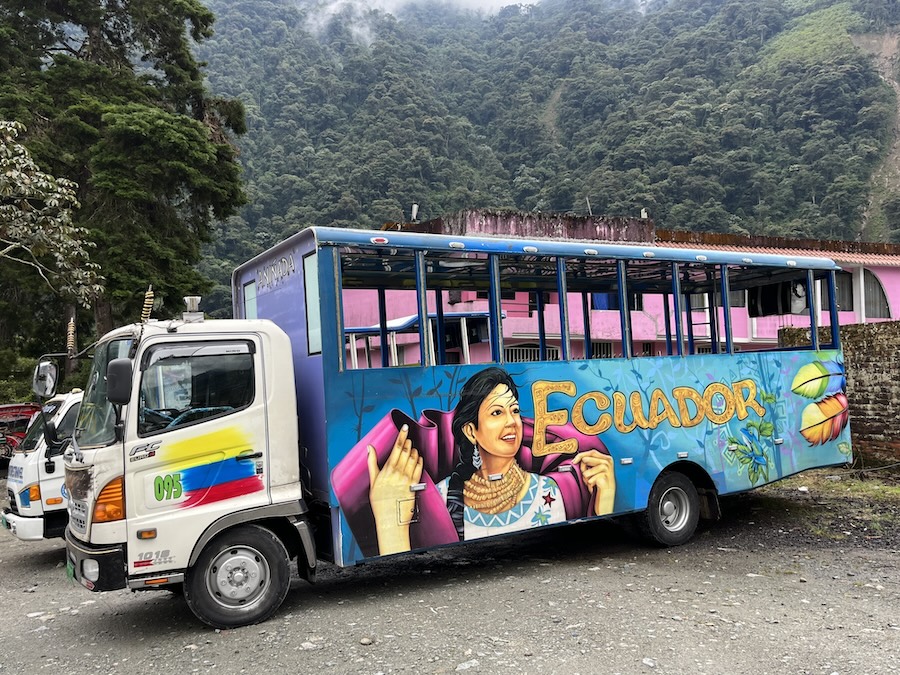
Getting to Pailón del Diablo is easy — and part of the fun, if you do it right. It’s around 17 km (30 minutes) from Baños, and you’ve got options: pedal there, ride a rickety bus, or hop in a taxi. No guides, no planning stress — just choose your level of effort.
🚴 By Bike (Popular + Budget-Friendly)
This is the most popular and fun option, especially for backpackers. You can rent a bike in Baños for about $10 a day and ride along the Ruta de las Cascadas, a scenic, mostly downhill road that passes several waterfalls en route to Pailón del Diablo. It’s about 2 hours one way, but you’ll probably want to stop for numerous photos, snacks and sketchy ziplines and cable cars.
If you’re not up for cycling back, catch a camioneta (pickup truck taxi) in Río Verde for around $3–5 USD per person. They’re used to ferrying tired tourists and bikes and are usually waiting for your business.
🚌 By Bus (Cheap + Easy)
Head to the Baños bus terminal and grab a local bus heading towards Puyo. Tell the driver you’re getting off at Río Verde for Pailón del Diablo — you won’t be the only one getting off here. The ride takes about 30 minutes and costs roughly $1.
Buses run fairly often, but it’s not a timed schedule. For the return journey, just wait at the same spot and flag one down heading back to Baños.
🚕 By Taxi (Convenient + Pricey)
A taxi from Baños to Pailón del Diablo will cost you around $10–15 USD one way. You’ll have to agree on the fare in advance. Some drivers will wait while you visit (for an extra fee), or you can arrange a pickup time.
It’s the fastest and most comfortable option, especially if you’re travelling in a group or can’t be bothered figuring out the bus.
This was the option we took as the weather was a bit hit and miss. The driver took us to the best waterfalls, including Pailon Del Diablo, and waited at each one. He even took photos, suggested scenic cable cars, and pointed us to a brilliant lunch spot for trout.
🚐 By Tour (If You Want Zero Hassle)
Several Baños-based tours include Pailón del Diablo as part of a half-day or full-day waterfall circuit along the Ruta de las Cascadas. Good if you want someone else to do the planning, or if you’re short on time and want to see multiple spots in one go.
➡️ Don’t want the hassle? Check out this highly recommended full-day tour!
Pailon del Diablo Entrances: Which One Should You Choose?

There are now two entrances to Pailón del Diablo, each offering a unique perspective. Unfortunately, there’s no path or connection between the two inside, so if you want both views, you’ll need to visit each separately (and pay twice).
Upper Entrance (Nueva Entrada): Best for the Views
This newer entrance provides a panoramic view of the waterfall from above. It’s a short, easy walk to the viewpoint, making it suitable for those looking for a less strenuous experience.
- Entry Fee: $2 USD per adult ($1 per child) during the day; $4 USD after dark.
- Minimal walking, easy access
- Best for photos, older knees, and staying dry(ish)
Ideal if you’re short on time or prefer to avoid the more adventurous lower route. There’s also a café and souvenir shop, if you fancy a coffee or a llama keyring with your waterfall.
Lower Entrance (Entrada Principal): Best for the Drama
This original entrance takes you down into the gorge, offering an up-close experience with the waterfall. Expect steep paths, tunnels, and a suspension bridge.
- Entry Fee: $2 USD per adult ($1 per child) during the day; $4 USD after dark.
- Takes 20–30 minutes each way (depending on how often you stop or slip)
- Includes a path behind the waterfall if you want to test your waterproofs
It’s more effort, but way more immersive. If you only do one and don’t mind a bit of mist in your eyes and water in your shoes, this is the one to pick.
Pailon del Diablo Opening Hours & Night Visit Info
Pailón del Diablo is open every day, including weekends and holidays. Most people go during the day, but night visits are a thing, and they’re a very different vibe.
🕒 Opening Hours
- Daily: 9:00 a.m. to 10:30 p.m. (Later closing on weekends)
- Last entry: Usually around 9:45 p.m. (though this can vary a bit by entrance)
Arrive early in the morning (before 10 a.m.) if you want to avoid the tour groups and have the place more or less to yourself. Midday gets busy, especially on weekends and public holidays.
🌙 Visiting Pailón del Diablo at Night
After dark, the waterfall is lit up with coloured lights — it’s dramatic, a bit surreal, and completely different to the daytime experience. The upper entrance tends to stay a little drier and more popular for night visits, but you can do either.
- Night entry fee: $4 USD per person
- Bring a torch — paths can be dim, and the lighting is more mood than practical
- More mist, fewer crowds — especially in the off-season
Would we recommend going at night? If you’ve already done it during the day, sure. It’s a novelty. But if you’re only going once, daylight’s the better call — clearer views, safer trails, and more photo-friendly.
What to Bring to Pailón del Diablo
You don’t need a full hiking setup, but this isn’t a stroll in the park either. Think smart-casual waterproof.
- Waterproof jacket or poncho – unless you enjoy damp disappointment
- Shoes with a decent grip – for the slippery steps and questionable bridges
- Dry bag or ziplock – for your camera, phone, and dignity
- Cash – entry fee is cash-only, and the snacks en route aren’t free
- A small towel or tissues – essential if you do the lower route
Optional extras
- A change of clothes (especially if you’re heading out after)
- A torch (handy for night visits)
- A good attitude
Keep it light, keep it dry, and definitely don’t wear flip-flops.
What to Expect at Pailon del Diablo
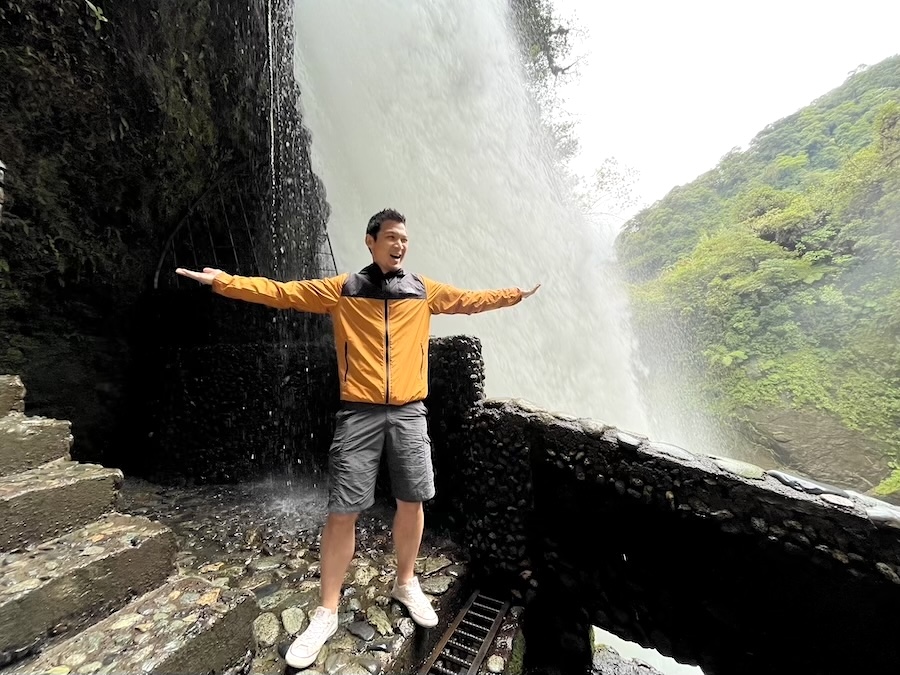
Expect to get wet. Expect to be impressed. Expect a bit of effort, but nothing too intense — unless you hate steps.
The upper route is easy and photogenic. The lower one’s more physical, but also the one that sticks in your memory. Busy from mid-morning onwards, but early or late visits are much calmer.
It’s touristy, yes — but it doesn’t feel overdone. And when you’re standing next to that cascade, soaked and slightly stunned, you’ll see why it’s worth the fuss.
FAQs About Visiting Pailon del Diablo
Still got questions? That’s understandable. Here are a few things we didn’t know either before visiting.
Is Pailon del Diablo suitable for kids?
Yes. Well, sort of. The upper entrance is easy enough for most. There are paved paths, so no dramas. The lower one’s a different story: narrow steps, slippery bits, and a decent climb back up. We saw kids doing it, but it depends on your child’s tolerance for getting wet and mildly terrified.
Can I visit Pailon del Diablo at night?
Yes, and it’s quite cool. The falls are lit up in colours (a bit theme park, but it works), and there are barely any crowds. Just bring a torch as the lighting’s more for mood than visibility. If you’re only going once, though, go in daylight.
How long does it take to visit?
Around 1 to 2 hours, depending on which route you take and how slow you like to take things. The lower trail adds more time (and stairs). We took it slow and took plenty of photos while soaking up (pun-intended) the view.
Can I swim there?
No! And you wouldn’t want to. The current’s strong, the rocks are sharp, and the spray’s intense enough to get you wet through anyway. You’ll be drenched just from standing nearby.
Wrapping Up: Pailon del Diablo
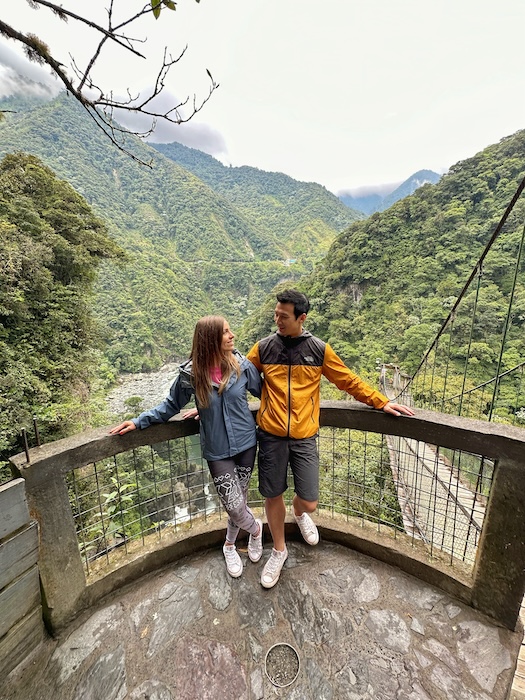
Pailón del Diablo was one of those places that actually lived up to expectations. We kinda knew it would be the best waterfall visit of our day, but it still caught us off guard. Once you’re at the bottom, soaked and slightly deaf, you get why it’s such a big deal.
We went as part of a DIY day trip from Baños with a local driver who doubled as a guide and occasional photographer. He dropped us at the best spots along the Ruta de las Cascadas, including this one. He even pointed us to a cracking trout lunch after.
Hopefully, this guide’s helped you figure out how to do it your way. Whether you bike, bus or take the lazy option like we did (once in a while is fine, right?), just make sure you go. It’s one of the few touristy things in Ecuador that still feels raw and real.


